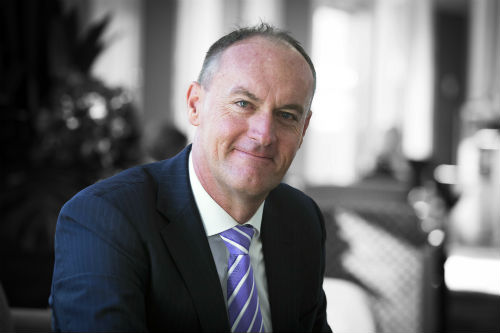Grant Thornton CEO Greg Keith has put people at the heart of the firm’s operations. He chats to Iain Hopkins about why he’s opted to disrupt his industry via its HR offerings
Grant Thornton CEO Greg Keith knows a thing or two about HR – in the mid-1990s he was his firm’s staff partner and later became the national head of HR. He still gets a kick out of seeing the work he did in that role bearing fruit all these years later.
“I’ve always enjoyed seeing people come through the system and seeing people develop and grow,” he says. “I’ve got a number of partners that I literally recruited out on campus, and you can’t help but remain closely linked to those people.”
It also naturally means that the people component features prominently in all the decisions Keith and his leadership team make. Keith says there is “no separation” between the people strategy and the business strategy. The people experience makes up one of the firm’s four ‘planks’ within its 2020 vision.
“Our view is that the client experience is the end game and the people experience is the beginning game, so we have to find people with the right background, the right fit, so they are motivated and provide our clients with the right experience,” Keith says.
Today, Keith works with his head of people and culture on a fairly simple formula: leadership + culture = performance.
“Rather than us focusing solely on the financial KPIs, our strategy is to focus on developing really strong leaders and making sure we have a culture that underpins that leadership. Then we believe the outcome, the performance, will be the result of that,” he says.
This people element, along with a broader corporate responsibility element, is engrained in the firm’s leadership development programs. For example, instead of attending a traditional partners’ conference, 131 partners and board members went to Cambodia in 2015 to build houses for HIV-affected families. And the future leaders program, which includes managers and associate directors, travelled to Central Australia to be involved with an Indigenous group called Red Dust to put on a mini ‘Olympics’ for kids who hadn’t had any experience with healthy lifestyles and sport.
“It’s giving our people the opportunity to engage with others differently, to work together collegiately while working towards real outcomes that have a social responsibility element to them. It’s not just writing a cheque and giving money to someone,” Keith says.
Keeping pace with client demands
Keith says a key challenge for his firm is adapting to the “different economies” presently at play in Australia, where each state has a different appetite for growth. “Our vision is to be the growth adviser for mid-sized business. We’re listening to our clients and moving away from being solely a compliance accounting firm, and being advisers with a focus on client growth.”
This means offering new services to help clients grow. One example is the development of an Asia-Pacific group within the firm to match clients who wish to expand into this region. An IT consulting group is being developed to help clients facing digital disruption, and a leadership development and culture team is helping clients align their strategy to their culture, and vice versa.
Disruption via HR
Over the past 12 months Grant Thornton has opted to disrupt the market in an unexpected way: through its people and culture policies. Three new policies, all with the theme of workplace flexibility at their core, have taken the challenge to competitors.
‘GT Flex-appeal’ is all about flexible working arrangements. Employees are encouraged to talk to management about what’s important to them in their life, whether it’s a desire to travel, or sporting commitments, or family commitments. The firm works with each employee to design a working life that suits them, as much as it suits Grant Thornton and its clients.
The firm has also shaken up long-service leave. Those who have been with the firm for at least two years are granted an extra week’s leave per year through early access to their long-service leave. Keith expects the benefits will outweigh the costs as they return to work fresher and more engaged.
With average staff tenure at Grant Thornton being between four and five years, Keith acknowledges that the majority of staff do not access long-service leave at all under current legislation. “This will give them the ability to access it after two years and allow them to connect with our organisation in a different way,” he says. “We intentionally wanted to disrupt the market, to give our people an experience they can’t receive anywhere else.”
Most groundbreaking of all is the introduction of a market-leading provision for paid parental leave. The firm had been offering the market average of 12 weeks, but from 1 May this increased to 20 weeks. From the same date in 2017 this will expand to 26 weeks.
“We’ve taken the opportunity to take a market-leading and disruptive stance on this,” Keith says. “What’s really interesting is the interest shown by male employees at the firm. Those who are expectant fathers are seeing 20 or 26 weeks as an opportunity to effectively take a career break to become the primary carer.”
While he doesn’t want the issue of paid parental leave to become a “gender issue”, the firm is making progress in other areas to improve gender disparity. By 2020 the firm expects to have 35% of partner roles filled by women. “We’re currently sitting at 11%, and with the current goal of promotions to partner we’re expecting that to be at 14–15% this year, so we’re on target, but we have work to do,” Keith says.

